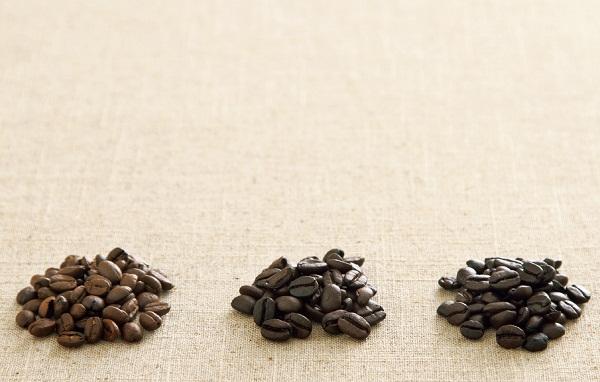Roasting determines the spirit of your coffee and affects the taste of your coffee.

For professional baristas, please follow the coffee workshop (Wechat official account cafe_style)
Some people like to drink coffee: black coffee, only sugar, milk, wine. There are different habits of drinking on different occasions and times. Some people like to "taste" coffee: try new beans, taste its aroma, and savor every level of flavor after the coffee is imported. No matter what attitude you fall in love with coffee, it has something to do with the roasting of coffee; the final color of beans determines your coffee spirit.
In addition to different places of origin, different degrees of roasting is the key to affect the taste of coffee.
Beans have different flavors due to different local conditions.
Generally speaking, coffee trees are suitable for growing in the tropics and subtropics, so the producing areas are mainly concentrated between the Tropic of Cancer, such as Central and South America, Africa and Asia, which all produce world-famous coffee beans; and because of different soils and climates, the beans produced have their own flavors.
For example, beans from Latin America (such as Colombia and Guatemala) are refreshing and palatable, and are very suitable for blending all kinds of coffee beans with obvious flavors such as Africa or Asia. As for beans from Asia / Pacific regions (such as Sumatra), they taste and smell herbaceous, less sour and full-bodied, making them suitable for individual coffee.
Beans from African / Arab regions (such as Kenya) have a sour flavor and aroma similar to grapefruit and are also rich in taste, making them basically suitable for making iced coffee. In the case of Starbucks, for example, in order to provide beans suitable for fresh cooking, it selected Arabica coffee beans (CoffeeArabica), which are more tough and resistant to pressure, and boiled out of Arabica beans (Arabica beans), which grow at high altitudes; as for Robusta beans (Coffee Robusta), they are more commonly used to make three-in-one coffee.
Start by choosing the aroma of your favorite coffee
Precisely because the flavor of coffee beans is so diverse, from individual coffee beans with a slightly higher unit price to comprehensive coffee beans that are easy to get started and try in a variety of ways, we will certainly feel confused at first when selecting and buying them. Apart from some self-baked shops that can ask directly, how should we choose ready-packaged coffee beans?
Take Starbucks coffee beans as an example, there is an one-way air valve with a small hole on the package, on the one hand, to let the carbon dioxide produced by the coffee beans in the bag out smoothly, and on the other hand, to prevent the air from entering the bag and lock the aroma in the package. you can squeeze your nose close to the circular air valve. Hold the package and squeeze the sides of the air valve with your thumbs (sometimes there is not too much carbon dioxide in the bag, so it is not easy to squeeze out the smell) to smell the coffee inside.
You can start by choosing the aroma of coffee you like, but sometimes the aroma is not exactly the same as the smell after cooking. The simple principle is: if you don't like sour coffee, don't pick beans that smell sour; if you prefer special smells, such as square fruit, flowers or smoke, you can try beans you might like based on the smell alone.
★ Coffee
Single-Origin is a geographical term used to accurately describe the origin or country of coffee, showing the unique flavor of that region or country, such as Kenyan coffee and Sumatran coffee that we are familiar with.
★ mixed coffee
Comprehensive coffee is the blending of coffee from different producing areas to create a rich and different taste of coffee flavor. Since traders mixed Yemeni mocha and Java coffee to create mocha java coffee, this blending method has been considered to be a very important part of coffee culture and can bring all kinds of flavor harmony fun.
Important Notice :
前街咖啡 FrontStreet Coffee has moved to new addredd:
FrontStreet Coffee Address: 315,Donghua East Road,GuangZhou
Tel:020 38364473
- Prev

Coffee is delicious, coffee cups are also learned!
Holding a cup of coffee is not the only use of a coffee mug. a good coffee cup can make the coffee fuller aroma, richer taste, smoother taste and purer color. A pure white bone china cup. Coffee cup knowledge 1 ─ material and thickness, make coffee different a cup of coffee worth tasting carefully, most of the impression is filled with a pure white fine bone porcelain cup
- Next

[magic beans; ground beans] how to buy a suitable bean grinder?
Communication of professional baristas Please pay attention to the selection of bean grinder in coffee workshop (Wechat official account cafe_style) the first priority is to be able to grind coffee powder with uniform particles, otherwise it will be very destructive to the flavor of coffee, even if the coffee beans with unique characteristics are not ground evenly and the extraction is inconsistent, so that the taste is messy and cannot present what it should have. The hand-operated bean grinder is being built
Related
- Beginners will see the "Coffee pull flower" guide!
- What is the difference between ice blog purified milk and ordinary milk coffee?
- Why is the Philippines the largest producer of crops in Liberia?
- For coffee extraction, should the fine powder be retained?
- How does extracted espresso fill pressed powder? How much strength does it take to press the powder?
- How to make jasmine cold extract coffee? Is the jasmine + latte good?
- Will this little toy really make the coffee taste better? How does Lily Drip affect coffee extraction?
- Will the action of slapping the filter cup also affect coffee extraction?
- What's the difference between powder-to-water ratio and powder-to-liquid ratio?
- What is the Ethiopian local species? What does it have to do with Heirloom native species?

